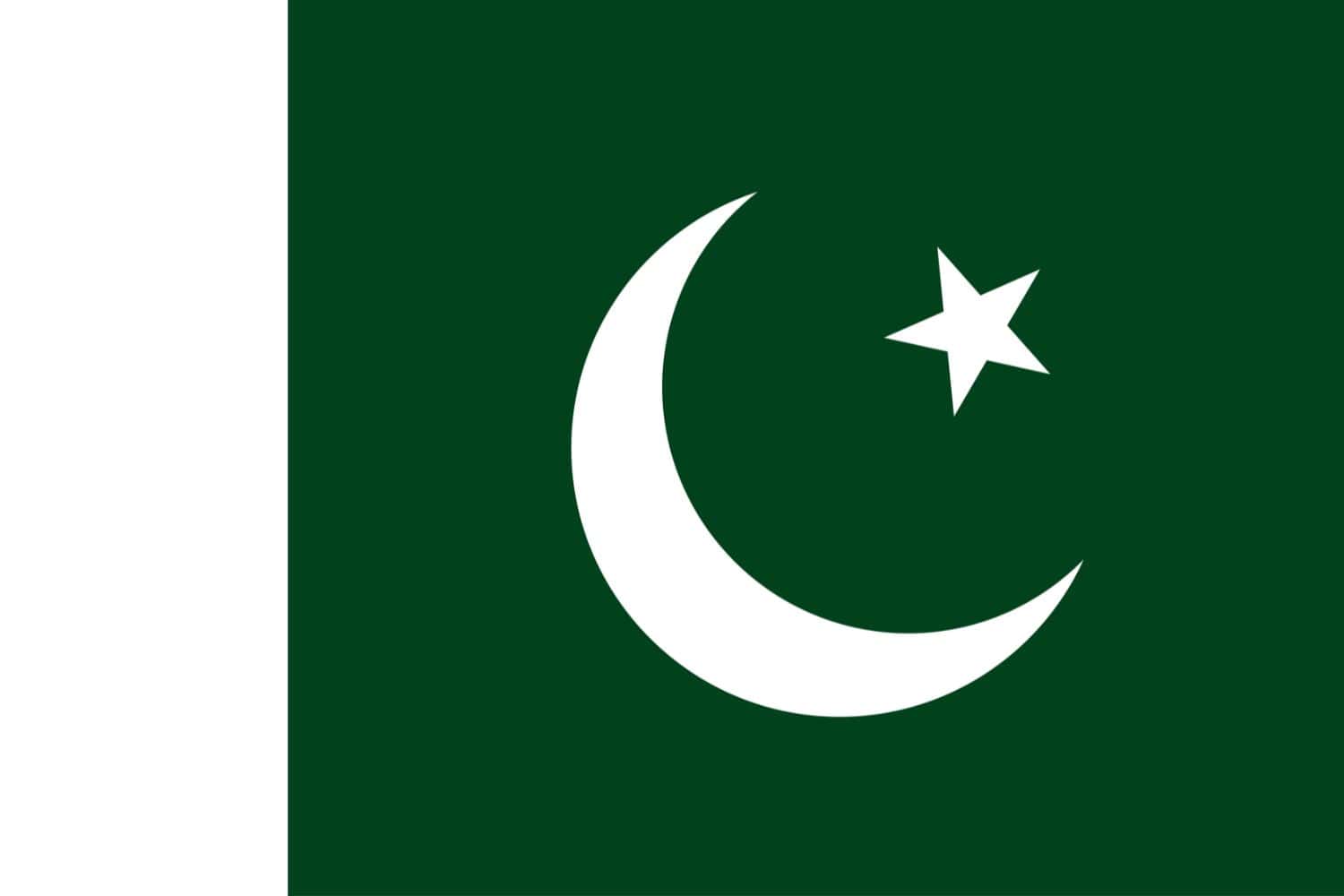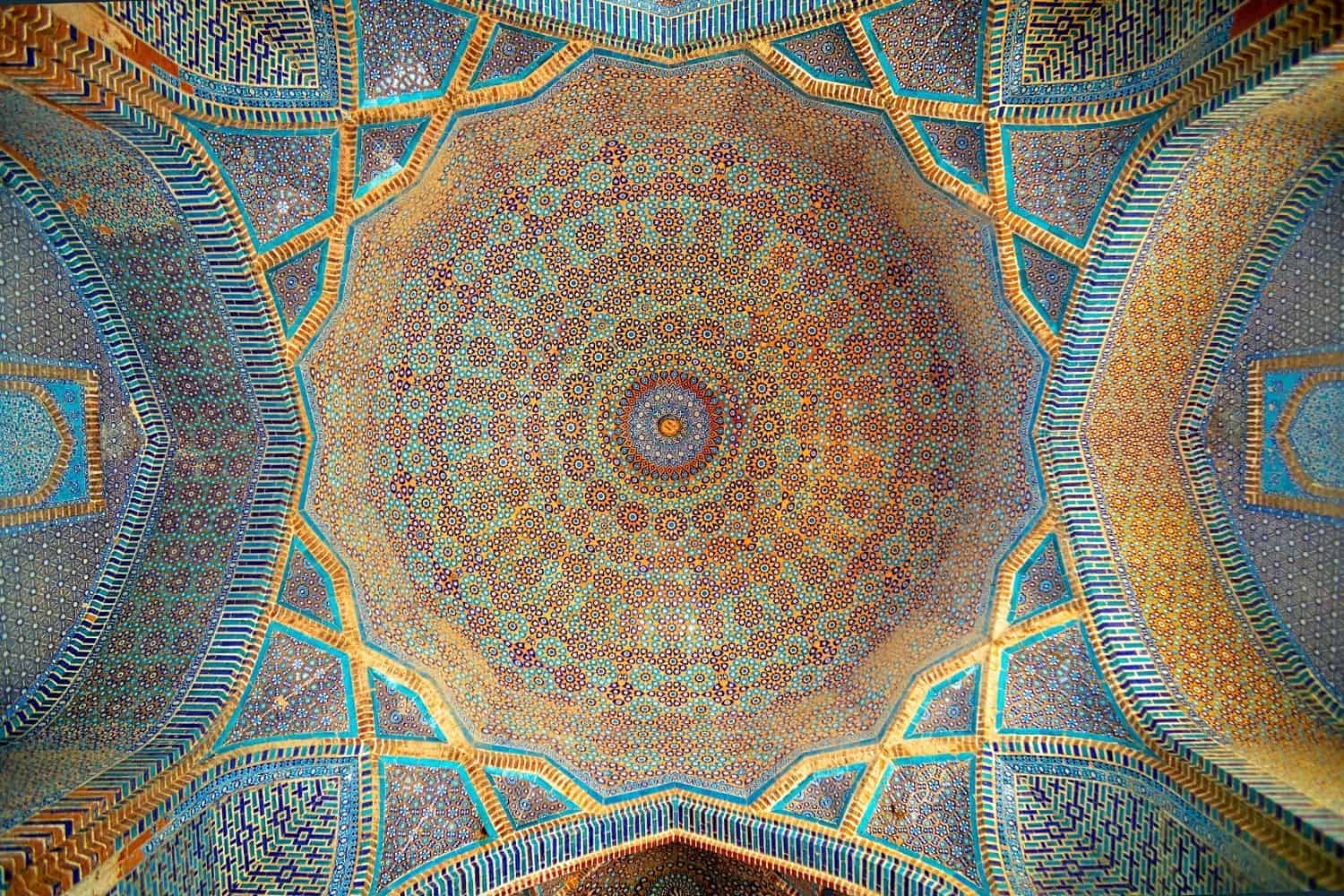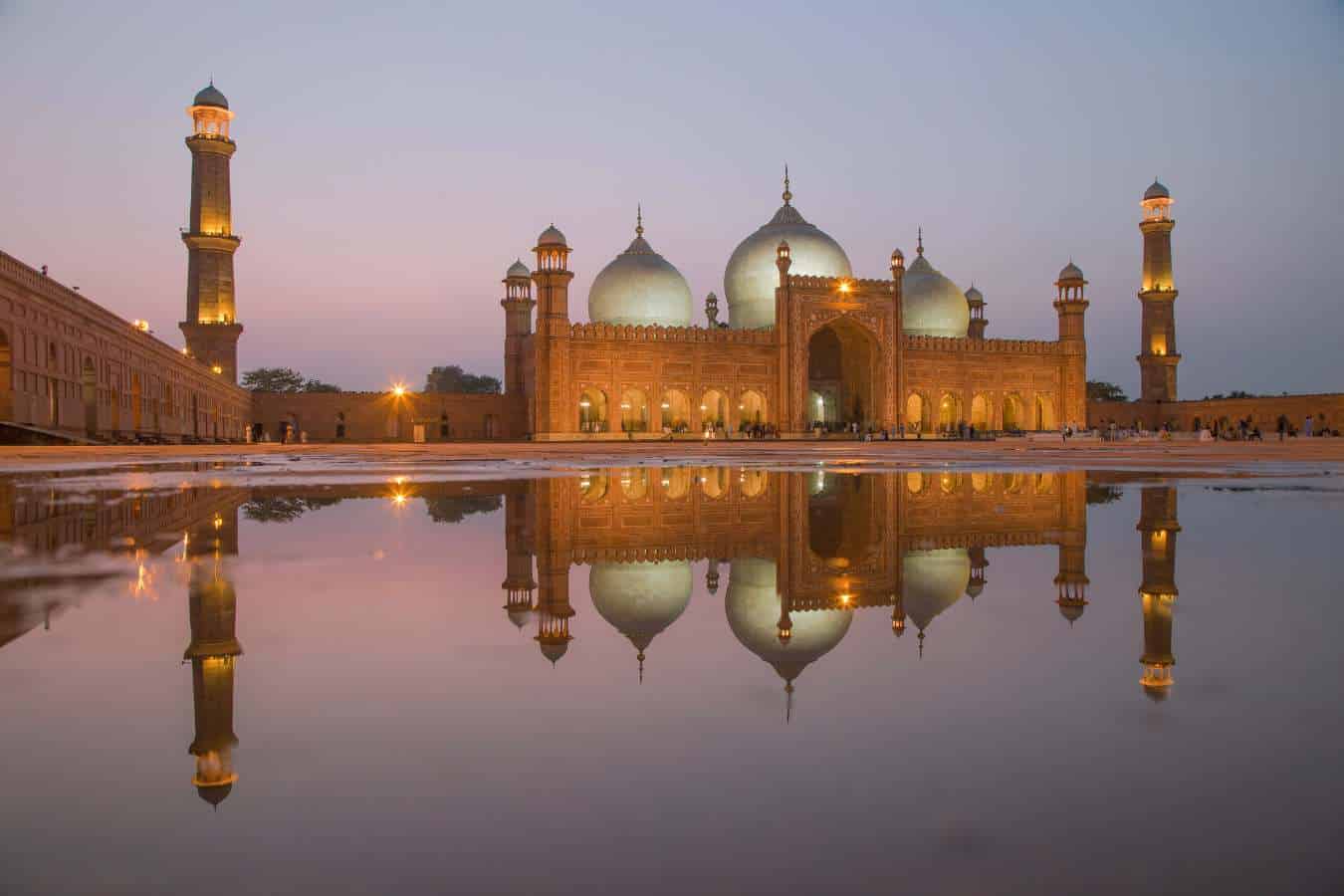The Pakistani flag, also known as the flag of Pakistan, holds a significant place in the nation’s history and culture. With its vibrant colors and meaningful symbolism, it represents the Pakistani identity and heritage. In this article, we will delve into the intriguing aspects of the Pakistan flag, its design, historical background, and the symbolism behind its elements.
The Pakistan flag features a green field with a white crescent and a five-pointed star. The green color symbolizes Islam and the majority Muslim population, while the white represents the religious minorities and peace. The crescent and star are traditional symbols of Islam and have historical significance in Pakistani culture.
Pakistan Flag: Colors and Symbolism
- The flag of Pakistan features a green field with a white crescent and a five-pointed star.
- The green color symbolizes Islam, peace, and the richness of the Pakistani lands.
- The white color represents peace and the religious minorities in Pakistan.
- The crescent and star are symbols of Islam and hold historical and cultural significance in Pakistani tradition.
- The flag’s design reflects the nation’s aspirations, cultural heritage, and unity among the Pakistani people.
Flag of Pakistan
The flag stands as a powerful symbol that encapsulates the cultural significance and spirit of the nation. Its design consists of a green field with a white crescent and star. The green color symbolizes the majority Muslim population and the ideals of Islam, honoring the religious identity of the Pakistani people. The white color represents the religious minorities and the desire for peace and harmony. The crescent and star are significant symbols in Islamic culture, representing progress and light respectively.
The history of the flag is intertwined with Pakistan’s rich heritage and journey towards nationhood. Adopted on August 11, 1947, the flag represents the unity and aspirations of the Pakistani people.
Beyond its aesthetics, the flag from Pakistan carries deep symbolic meanings. The colors reflect the values and aspirations of the Pakistani people, symbolizing peace, faith, and unity. The crescent and star, common symbols in Islamic tradition, embody Pakistan’s cultural and religious identity and serve as a reminder of the nation’s dedication to progress and enlightenment.
National Flag Etiquette and Protocol
Respecting the proper usage and display of the Pakistani flag is of utmost importance. Understanding flag etiquette is essential, especially during national events and ceremonies. Learn about the protocols governing the handling, hoisting, and lowering of the flag. Discover the appropriate procedures for retiring or handling damaged flags, ensuring they are accorded the respect they deserve.
- Proper Handling: The Pakistani flag should be handled with care and respect, ensuring it is not allowed to touch the ground or floor. It should be held upright and not dragged.
- Hoisting and Lowering: When hoisting the flag, it should be raised briskly and lowered ceremoniously. It is customary to hoist the flag at sunrise and lower it at sunset, although this may vary depending on the occasion or specific guidelines.
- Displaying the Flag: The Pakistani flag should be displayed with the green field on top and the white stripe on the left when viewed from the front. It should be flown freely and not entangled or obstructed.
- Half-Staff: Lowering the flag to half-staff is a gesture of mourning or respect. This should be done on specific days of remembrance or when directed by authorities to honor national tragedies or the passing of significant figures.
- Flag Retirement: When a Pakistani flag becomes damaged, torn, or worn out, it should be retired in a dignified manner. This can involve burning it in a respectful and solemn ceremony, following appropriate guidelines and local regulations.
- Flag Size and Placement: The size of the Pakistani flag displayed should be proportionate to the size of the flagpole or display area. It is recommended to consult local guidelines or authorities for specific rules regarding flag size and placement.
- Respectful Disposal: If a flag cannot be retired through burning, it should be disposed of in a respectful manner. This can involve burying it or handing it over to authorized organizations that specialize in flag disposal.
Interesting Facts and Trivia
Embark on a journey of fascinating facts and lesser-known trivia about the Pakistani flag. Discover unique features within the flag’s design that hold hidden symbolism. Uncover stories of famous incidents or events involving the flag that have left an indelible mark on the nation’s history and identity.
Rich Tapestry of History
- 1947: The current flag of Pakistan was adopted on August 11, symbolizing the unity and aspirations of the Pakistani people.
- Colors and Symbolism: The green color represents the Islamic majority and the ideals of prosperity, while the white stripe symbolizes religious minorities and peace. Together, they emphasize the country’s commitment to religious harmony.
- Crescent and Star: The crescent represents progress, and the star stands for light and knowledge in the Pakistani tradition.
- National Identity: The flag embodies Pakistan’s rich history, cultural heritage, and the nation’s ongoing pursuit of unity, prosperity, and harmony.
These historical facts highlight significant moments in the history of the Pakistani flag, showcasing its role in shaping Pakistan’s national identity and symbolizing its struggles and aspirations throughout the years.
Flag-Related Symbols and Emblems
A flag is not alone in representing the nation’s identity. Explore additional national symbols and emblems closely associated with Pakistan, understanding their significance and how they relate to the flag. Delve into their historical and cultural roots, further enriching your understanding of Pakistan’s heritage. It’s easy to travel and make a Pakistan tour to visit the country’s best destinations.
Symbolisms of the Pakistan Flag
The flag of Pakistan holds several symbolic elements that represent the nation’s history, values, and aspirations. Here are the symbolisms of the Pakistan flag presented in itemized form:
- Green Color: Represents the majority Muslim population of Pakistan and signifies prosperity and vitality.
- White Stripe: Stands for religious minorities and peace.
- Crescent Moon: Symbolizes progress and enlightenment in Pakistani culture.
- Five-Pointed Star: Denotes light and knowledge, guiding the nation on its path to progress and higher ideals.
- Flag’s Design: Reflects Pakistan’s aspirations, cultural heritage, and unity among the Pakistani people.
- National Identity: The flag serves as a powerful symbol that unifies the Pakistani people, reminding them of their shared heritage and cultural identity.
- National Aspirations: Through its design and elements, the flag embodies the aspirations and values of the Pakistani nation, including prosperity, peace, enlightenment, and knowledge.
These symbolisms in the flag contribute to the country’s sense of identity and pride, reflecting its historical journey and cultural significance.
Flags of Similar Countries or Regions
Examining the flags of neighboring countries or regions can provide intriguing insights. Compare and contrast the flags, exploring similarities in design, colors, or symbolism. Uncover historical and cultural connections between flags, shedding light on shared influences or distinctive identities.
Pakistani Flag vs Indian Flag
Similarity: Both flags feature a green field.
Difference: The Indian flag includes a navy blue Ashoka Chakra (wheel) in the center of its white stripe, while the Pakistani flag has a white crescent and a star.
Pakistani Flag vs Bangladeshi Flag
Similarity: Both flags have a green field.
Difference: The Bangladeshi flag features a red circle in the center.
Pakistani Flag vs Afghan Flag
Similarity: Both flags incorporate the color green.
Difference: The Afghan flag has a tri-color vertical stripe pattern (black, red, green) with the country’s coat of arms at the center.
Pakistani Flag vs Iranian Flag
Similarity: Both flags use green and white colors.
Difference: The Iranian flag is a tricolor of green, white, and red horizontal bands with the national emblem in red centered in the white band and the phrase “Allahu Akbar” written in the Kufic script in white, repeated 11 times along the bottom edge of the green band and 11 times along the top edge of the red band.
Pakistani Flag vs Nepali Flag
Similarity: Both flags have white and green colors.
Difference: The Nepali flag is crimson with a blue border around the unique shape of two overlapping right triangles; it also features a white moon emitting eight rays, with a crescent attached, and a white sun with 12 rays.
Pakistani Flag vs Chinese Flag
Similarity: Both flags feature a predominant field of one color.
Difference: The Chinese flag is red with a large yellow five-pointed star and four smaller yellow five-pointed stars arranged in a vertical arc toward the middle of the flag from the hoist side.
Frequently Asked Questions (FAQs)
Discover answers to common questions related to the Pakistan flag picture. From its historical origins to the symbolism behind its elements, find concise and informative responses that address inquiries commonly posed by those curious about Pakistan’s flag.
What do the colors on the Pakistani flag represent?
The green represents the Muslim majority of Pakistan, while the white stripe represents the religious minorities.
What is the significance of the crescent and star on the flag?
The crescent represents progress, and the star stands for light and knowledge.
When was the Pakistani flag officially adopted?
The flag was officially adopted on August 11, 1947, just three days before the country’s independence.
Who designed the Pakistani flag?
The flag was designed by Amiruddin Kidwai.
How is the Pakistani flag different from the flag of the All-India Muslim League?
The flag of Pakistan is based on the flag of the All India Muslim League, which is green with a white star and crescent. However, the Pakistani flag has a white vertical stripe on the hoist side to represent religious minorities.
Is there a specific ratio for the Pakistani flag?
Yes, the official dimensions of the Pakistani flag are in the ratio of 2:3 (length to width).
How should the flag be displayed on Pakistan’s Independence Day?
On Independence Day, the flag is flown prominently across the country, often accompanied by national anthems and various events. It’s customary to hoist the flag at dawn and lower it at dusk.
Are there any rules and protocols associated with the hoisting and lowering of the flag?
Yes, there are specific protocols. For instance, the flag is never allowed to touch the ground or be used as a drapery. When lowered, it should be done slowly and ceremoniously.
How is the flag used in national mourning?
During national mourning days, the flag is flown at half-mast.
Can the national flag be flown at night?
The national flag can be flown at night, but only if it is illuminated properly.







